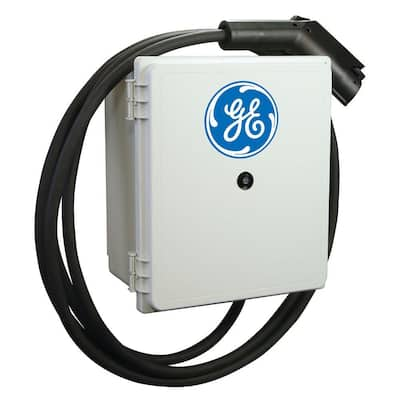DoobeeDude
Active member
- Joined
- Aug 8, 2015
- Messages
- 38
So I just drove my new 2015 SV home (with the 6.6kW and the quick charge port) and wanted to see if my charger plans make sense.
I have a 45 mile round trip daily commute. Fortunately, parking is covered at both ends (meaning less strain from HVAC). So I really don't have any range anxiety, with a new battery and all.
Nonetheless, I do think I would rather be able to take advantage of the 220V charging, so I'm having a 220V line run to my garage. I'm thinking I will just do the EVSE upgrade to my level 1 charger. Even though this is a lease, I suspect that the difference either won't be noticed, or will be easy enough to worry about in three years. Maybe this is my first area of concern... Do I really need two EVSE cords? I can't see why I need to lug one around in the car. The trickle is so slow (in an emergency), that I would just drive to a regular charging station (where I don't need a cord anyway). Anything I'm missing here? Is the risk at the end of the lease greater than I imagine?
Second point is about the amperage on the line being run to the garage. I believe I have an existing 40 amp line for a hot tub outlet (not being used), with GFCI at the breaker box. This would be the easiest option to use for the electrician. I'm all in favor of being future proof, but it seems like a line that supports more than 40 amps at this point is a bit of overkill. I've read most everything here, so I know this has been a common point of discussion. Is there something I'm missing? Is the next Tesla really going to break the 40amp mark for home charging? IF so.. wow.
Anyway, just thought I'd throw a couple questions out for the group before I pull the trigger. I should be able to survive on trickle charge for a few weeks anyway.
I have a 45 mile round trip daily commute. Fortunately, parking is covered at both ends (meaning less strain from HVAC). So I really don't have any range anxiety, with a new battery and all.
Nonetheless, I do think I would rather be able to take advantage of the 220V charging, so I'm having a 220V line run to my garage. I'm thinking I will just do the EVSE upgrade to my level 1 charger. Even though this is a lease, I suspect that the difference either won't be noticed, or will be easy enough to worry about in three years. Maybe this is my first area of concern... Do I really need two EVSE cords? I can't see why I need to lug one around in the car. The trickle is so slow (in an emergency), that I would just drive to a regular charging station (where I don't need a cord anyway). Anything I'm missing here? Is the risk at the end of the lease greater than I imagine?
Second point is about the amperage on the line being run to the garage. I believe I have an existing 40 amp line for a hot tub outlet (not being used), with GFCI at the breaker box. This would be the easiest option to use for the electrician. I'm all in favor of being future proof, but it seems like a line that supports more than 40 amps at this point is a bit of overkill. I've read most everything here, so I know this has been a common point of discussion. Is there something I'm missing? Is the next Tesla really going to break the 40amp mark for home charging? IF so.. wow.
Anyway, just thought I'd throw a couple questions out for the group before I pull the trigger. I should be able to survive on trickle charge for a few weeks anyway.




